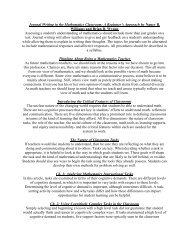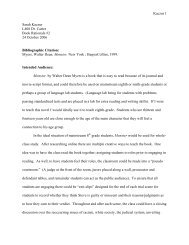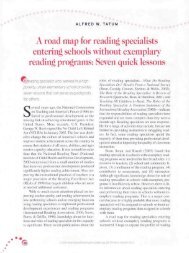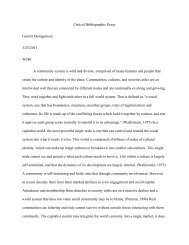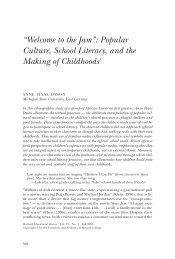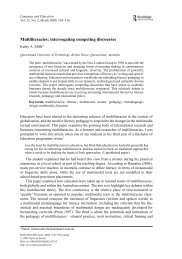Night. Night - Oncourse
Night. Night - Oncourse
Night. Night - Oncourse
Create successful ePaper yourself
Turn your PDF publications into a flip-book with our unique Google optimized e-Paper software.
Kaczur 17<br />
The autobiography, <strong>Night</strong> , by Elie Wiesel is written proof of the real life horror that existed<br />
during the Holocaust. It is not fiction, therefore its life applications are evident. One should never<br />
lose faith or whatever guiding force that may keep them going. This faith was the only force that<br />
helped Elie to survive, and without this faith Elie would have surely succumbed to dying. Some<br />
morals of this autobiography are that life is not always fair, and people are not either. People<br />
give in to power to save themselves and protect their own lives. People will sometimes hurt<br />
others, even those close to them, if put in a life or death situation. The major purpose of this<br />
autobiography is to recount the events that took place during the Holocaust. One may think that<br />
Elie wrote his story to tell people of the great tragedy that took the lives of his family and of<br />
millions of others that were taken for no reason at all.<br />
http://www.bellmore-merrick.k12.ny.us/night.html<br />
Approximately 11 million people were killed because of Nazi genocidal policy. It was the<br />
explicit aim of Hitler's regime to create a European world both dominated and populated by the<br />
"Aryan" race. The Nazi machinery was dedicated to eradicating millions of people it deemed<br />
undesirable. Some people were undesirable by Nazi standards because of who they were, their<br />
genetic or cultural origins, or health conditions. These included Jews, Gypsies, Poles and other<br />
Slavs, and people with physical or mental disabilities. Others were Nazi victims because of what<br />
they did. These victims of the Nazi regime included Jehovah's Witnesses, homosexuals, the<br />
dissenting clergy, Communists, Socialists, a-socials, and other political enemies.<br />
Those believed by Hitler and the Nazis to be enemies of the state were banished to camps. Inside<br />
the concentration camps, prisoners were forced to wear various colored triangles, each color<br />
denoting a different group. The letters on the triangular badges below designate the prisoners'<br />
countries of origin.<br />
Jews<br />
This photo shows a chart of the prison badges used in concentration camps.




